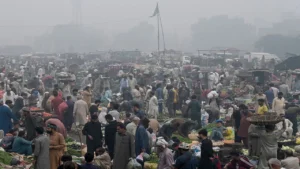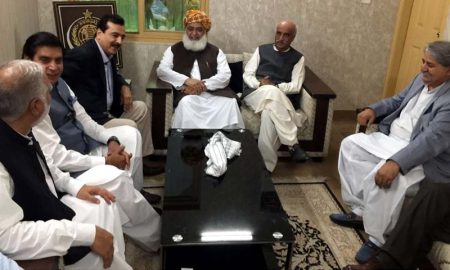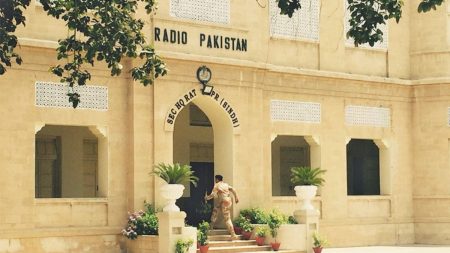The Senate Standing Committee on Water Resources has called its first meeting at Parliament House, under the direction of Senator Shahadat Awan, In order to prevent disaster, the chairman of the committee instructed the Federal Flood Commission to provide the most recent Daily Flood Situation Reports (DFSR) to the committee, the government, and other agencies.
The purpose of the meeting was to hear a detailed report on the Federal Flood Commission’s preparedness for the upcoming monsoon season and its possible effects, as well as to receive an update on the commission’s flood protection plan from the chairman.
The following senators were present: Senator Khalil Tahir; Senator Faisal Saleem Rahman; Senators Muhammad Humayun Mohmand, Muhammad Fesal Vawda, Poonjo Bheel, and Hidayattullah Khan. Afterwards, Senator Musadik Malik, the federal minister for water resources, also became involved in the events. The chair of the committee conveyed her dissatisfaction regarding the nonattendance of ministry representatives, underscoring the significance of their attendance during these pivotal periods of the monsoon.
The Committee emphasized the proactive aspect of their discussion, targeted at precautionary actions, while highlighting the arrival of the monsoon season. Senator Humayun Mohmand emphasized the need to control Tarbela water flows and the yearly deadline of August 20 for reservoir levels.
Officials responded by outlining procedures for controlling floodwaters through Tarbela, which included regulated discharges during periods of high precipitation. The Federal Flood Commission Chairman was asked to provide the Committee with a performance report covering a ten-year period. Right Bank Out Fall Drain (RBOD) One and Two are still suffering damage, and WAPDA has demanded a thorough report due to concerns of violations.
Regarding the origin of the floods in Kalam, it was noted that the main cause of the same was encroachment in the impacted areas.The Committee reaffirmed that the removal of encroachments was under federal jurisdiction, and in accordance with the Supreme Court’s ruling in the Marvi Memon case, satellite data was requested to determine the impacted zones.
The Committee Chairman emphasized the significance of effective resource management while arguing for the additional manpower that the Federal Flood Commission had mandated.Examining yearly reports going back to 2017, the Committee demanded more substantial information in subsequent submissions, expressing dismay at apparent duplications in them.
Senator Faisal Vawda issued a warning about the impending monsoon season’s potential for catastrophic flooding. Vawda strongly advised the provinces to take proactive preventive action in order to protect themselves from the approaching floods this monsoon season. He issued a dire warning, saying that a catastrophic event might happen if the provincial governments did not make considerable preparations to lessen the effects of the predicted flood.
He regretted that the administration was pulling the country back into the depths of flood chaos and bemoaned their inability to learn from past mistakes. He emphasized that the federal flood commission must be given immediate authority and that leaving this crucial duty in the hands of province authorities alone would not be adequate.
Vawda also made it quite clear that depending only on appearances to handle this situation would be insufficient and ultimately ineffective. Vawda emphasized that the commission must work nonstop to guarantee that it is overseen and that appropriate action has been made to protect the country from the impending onslaught of devastating floods.
A thorough briefing on the Federal Flood Commission’s Flood Protection Plan and preparedness steps for the approaching monsoon season was given by the commission’s chairman. The creation of a Flood Communication Cell and the release of DFSR to the public were important steps.
In order to prevent disaster, the committee instructed the commission at the end of the meeting to take preventative steps such as clearing encroachments, making backup plans, and finishing flood protection projects before the monsoon season begins.









